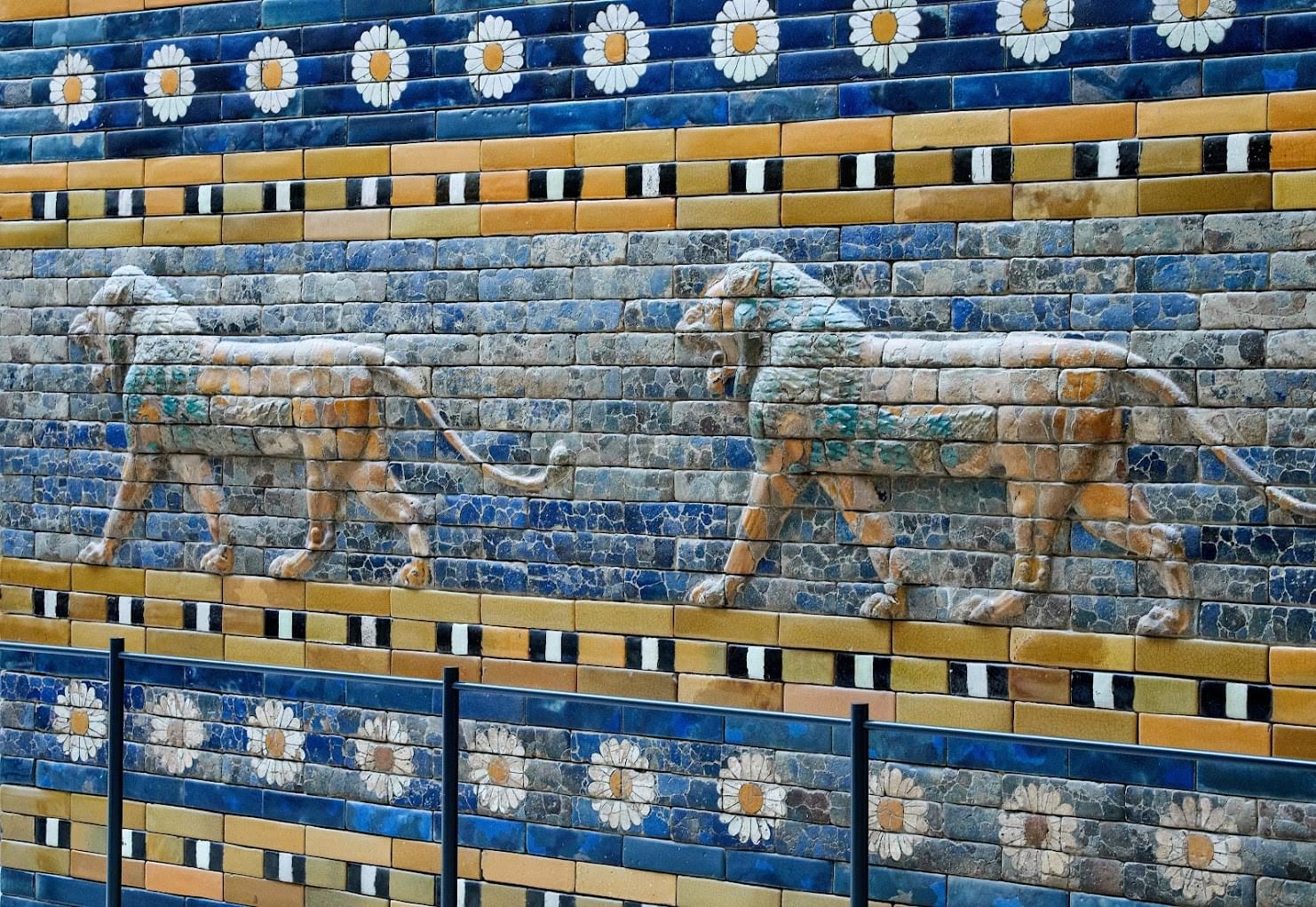Ishtar Gate, c. 575 BCE
The Ishtar Gate was the eighth gate to the inner city of Babylon. It was constructed in about 575 BC by order of King Nebuchadnezzar II on the north side of the city. It was considered one of the seven wonders of the world until it was replaced by the Lighthouse of Alexandria in the 6th century.
The Ishtar Gate was the starting point for processions and it was covered with colored glazed bricks and reliefs of animals and mythical beasts.
The foundations of the gate were excavated from 1899-1914 and the a reproduction of the gate was built at the Pergamon Museum, Berlin.
The dedicatory inscription on the gate reads-
Nebuchadnezzar, King of Babylon, the faithful prince appointed by the will of Marduk, the highest of princely princes, beloved of Nabu, of prudent counsel, who has learned to embrace wisdom, who fathomed their divine being and reveres their majesty, the untiring governor, who always takes to heart the care of the cult of Esagila and Ezida and is constantly concerned with the well-being of Babylon and Borsippa, the wise, the humble, the caretaker of Esagila and Ezida, the firstborn son of Nabopolassar, the King of Babylon.

Ishtar Gate, Photography by Ardon Bar-Hama
Both gate entrances of Imgur-Ellil and Nemetti-Ellil —following the filling of the street from Babylon—had become increasingly lower. Therefore, I pulled down these gates and laid their foundations at the water-table with asphalt and bricks and had them made of bricks with blue stone on which wonderful bulls and dragons were depicted. I covered their roofs by laying majestic cedars length-wise over them. I hung doors of cedar adorned with bronze at all the gate openings. I placed wild bulls and ferocious dragons in the gateways and thus adorned them with luxurious splendor so that people might gaze on them in wonder
I let the temple of Esiskursiskur (the highest festival house of Markduk, the Lord of the Gods—a place of joy and celebration for the major and minor gods) be built firm like a mountain in the precinct of Babylon of asphalt and fired bricks.
K. C. Hanson- Dedicatory Inscription on the Ishtar Gate, Babylon
What do you want to know?
Ask our AI widget and get answers from this website